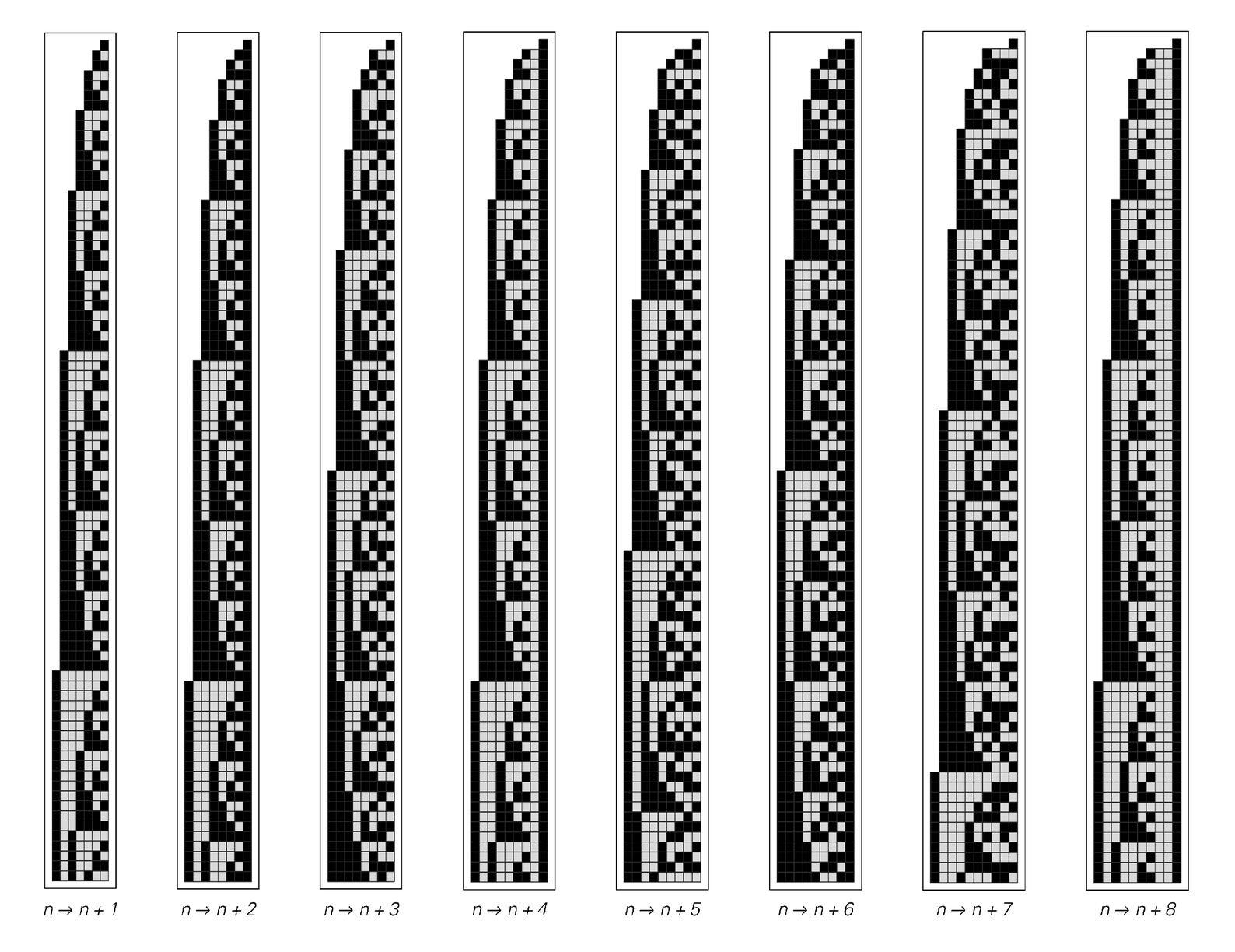The pictures below show what happens if one adds a number other than 1 at each step. Near the right-hand edge, each pattern is somewhat different. But at an overall level, all the patterns have exactly the same basic nested structure.
If instead of addition one uses multiplication, however, then the results one gets can be very different. The first picture at the top of the facing page shows what happens if one starts with 1 and then successively multiplies by 2 at each step.
It turns out that if one represents numbers as digit sequences in base 2, then the operation of multiplying by 2 has a very simple effect: it just shifts the digit sequence one place to the left, adding a 0 digit on the right. And as a result, the overall pattern obtained by successive multiplication by 2 has a very simple form.

Digit sequences in base 2 of numbers obtained by starting with 1 and then successively adding a constant at each step. All these patterns ultimately have the same overall nested form.